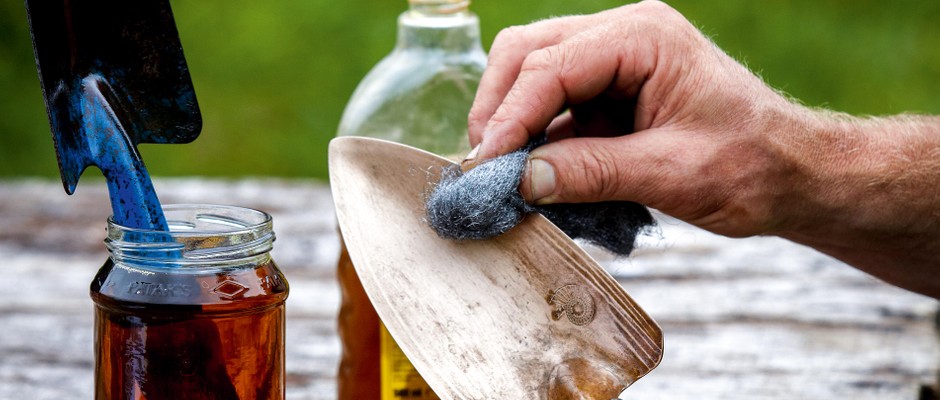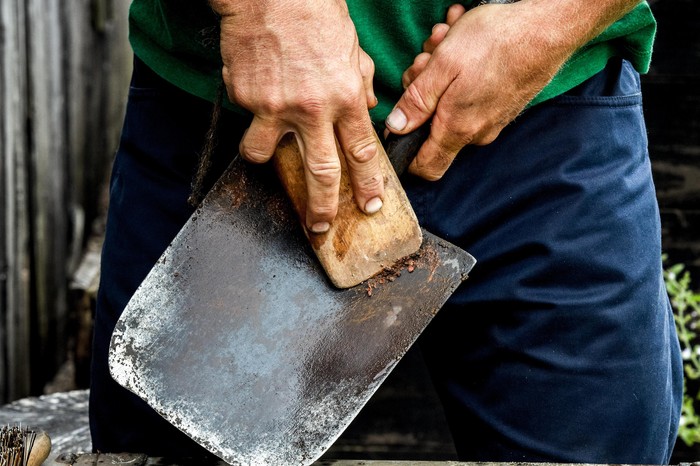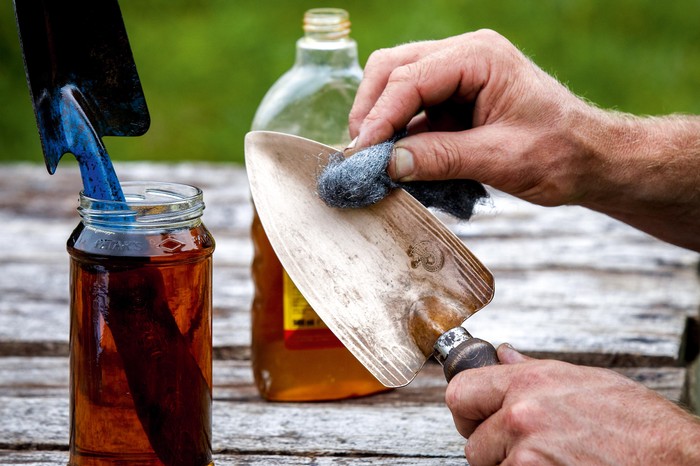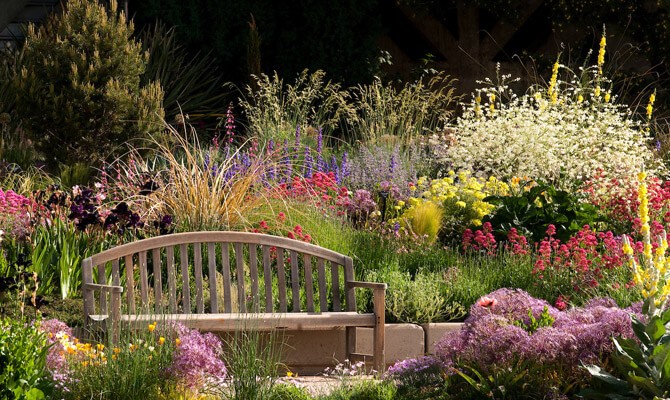
How to clean rusty tools
Keeping the garden tools sharp and free from rust can mean tools have a longer life and are a pleasure to use. Here's tips from Kristy Ramage and Daniel Back on how to on how to sharpen and clean rusty tools. Photographs Britt Willoughby Dyer
On a day-to-day basis, you need only scrape the soil off your tools and quickly wipe them over with an oily rag or plunge them into an oil and sand bucket, before hanging them up. But they will get rusty and at least a couple of times a year, possibly more if it’s particularly muddy, it’s good to give everything a thorough clean to take off the rust.

Cleaning, removing rust and oiling tools
Scrape off the mud
It’s useful to have a wedge-shaped piece of hard wood (traditionally called a ‘man’) to scape off most of the mud from rusty and over-used tools.

Wash the tools
An old galvanised water tank, or even a dustbin or bucket positioned right by the shed is ideal for washing tools. Scrub handles and tool ends with a stiff scrubbing brush, then place the tools in a warm place to make sure they are thoroughly dry.
Rub the handles down with fine sandpaper
- Buy now from Wickes (£4)
Any roughness on handles (washing can lift the grain of the wood) can be rubbed down with fine sandpaper.
Use wire wool
- Buy now from Toolstation (£1.89)

Any rust on the steel should be removed with medium-grade steel wool.
Apply oil
Apply linseed or tung oil to the wooden handles and metal heads, using a soft rag. You can use either raw or boiled linseed oil, but boiled often has driers added to it, and is lighter so it will dry more quickly. Hand tools can even be soaked in oil overnight, to feed and preserve the wood. Take out the following day, wipe off any excess oil and leave to dry.
Don't!
Whatever you do, don’t be tempted to store oily rags in bundles in hot sheds as they can easily combust. Instead, you should either keep them in a tin, with a lid, somewhere cool, or spread them out to dry between uses.
More like this
Read our articles on how to sharpen tools and how to to sharpen secateurs

Niwaki bundle worth £57 when you subscribe
Subscribe to Gardens Illustrated magazine and claim your Niwaki bundle worth £57
*UK only

Container Gardening Special Edition
The Gardens Illustrated Guide to Container Gardening.
In this special edition, discover colourful flower combinations and seasonal planting schemes for pots designed by leading plantspeople, and essential know-how for container gardening success. Just £9.99 inc UK p&pBy entering your details, you are agreeing to our terms and conditions and privacy policy. You can unsubscribe at any time.

Gardens of the Globe
From botanical wonders in Australia to tranquil havens closer to home in Ireland, let this guide help you to discover some of the most glorious gardens around the world
By entering your details, you are agreeing to our terms and conditions and privacy policy. You can unsubscribe at any time.




